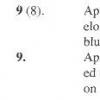
02-01-2026 17:43
MARICEL PATINOHi there, although I couldn't see the fruitbody, I

04-01-2026 17:45
 Stephen Martin Mifsud
Stephen Martin Mifsud
I was happy to find these orange asmocyetes which

03-01-2026 13:08
Niek SchrierHi all,We found groups of perithecia on a Lecanora

29-12-2025 17:44
Isabelle CharissouBonjour,J'aimerais savoir si d'autres personnes au

01-01-2026 18:35
Original loamy soil aside a artificial lake.The co

31-12-2025 19:27
Collected from loamy soil, at waterside (completel

Now I make "a little revision" of old specimens. So, there are Pezicula cf. acericola and P. cf aesculea, identified by previous researcher.
According to Verkeley, 1999 ("A Monograph of the genus Pezicula..."): P. aesculea has a bit "thinner" spores with L/W 3,6-4,4, while P. acericola has "thicker" spores with L/W 3,2-3,5.
In my specimen: Pezicula cf. acericola has L/W 3,1-5,3, mostly 3,8-3,9. Pezicula cf. aesculea L/W 3,3-4,2, mostly near 4.
Other differences: Pezicula cf. acericola has slightly larger apothecia, 1-2 mm, in small clusters consisting of 4-6 fruitbodies, Pezicula cf. aesculea has smaller fruitbodies, 0,5-1,2 mm, up to 13 in cluster.
First I thought, that I just have one species. But here, in Ascofrance database, I see 2 interesting records:
http://www.ascofrance.com/search_recolte/1646# - Pezicula aesculea, with quite "thick" spores and
http://www.ascofrance.com/search_recolte/2290 - Pezicula acericola, with quite "thin" spores and L/W 2,5-5.2!!
So, I' m confused. Where is the misunderstanding? Is L/W parameter important for distinguishing of these species? What are other important parameters?
Hope for your help very much,
Irina

Confusion is the base of science :-)
it seems that the both names have been mixed up unfortunately in both collections.
Note that in 1646 the last 2 photos are macroconidia, recognized by the flattened end.
The L/W ratio is the distinguishing feature, supplementary to that the spores are sometimes curved at the base in aescula.
the size and margin feature are from minor importance because this can be dependent of external influences.
As for the number of apothecia that are arising from one stroma (in acericola up to 13) this does not exclude 4-6
Your both collections seems to fit to aescula.
I hope this was of any help
Stip

Thank you for explanation, Stip!
To be more presice, in "acericola" clusters consisted of mainly 3-4-5 up to 6 fruitbodies, in "aesculea" clusters were 7-8-9 up to 13 fruitbodies.
But now with your comments I come back to idea that I have one species - aesculea. Furthermore, I have spores with curved ends in both cases.
Cheers,
Irina



